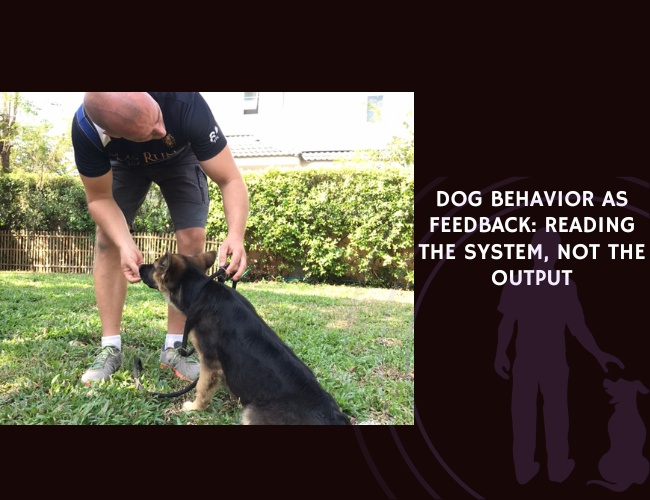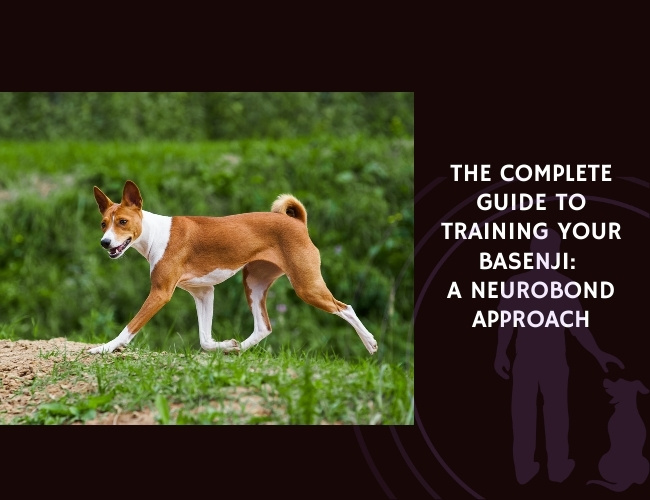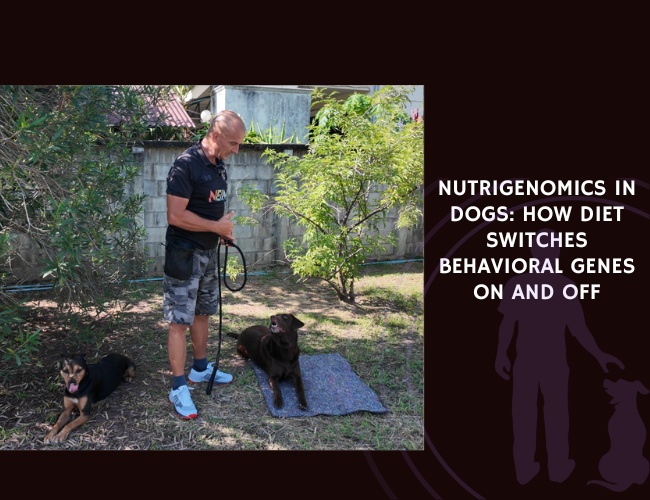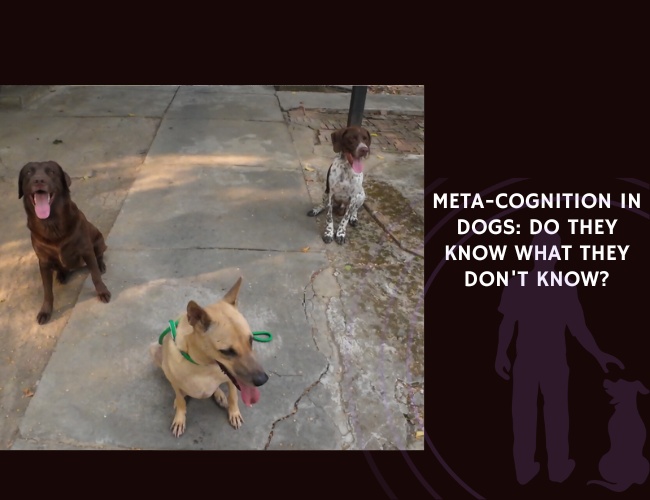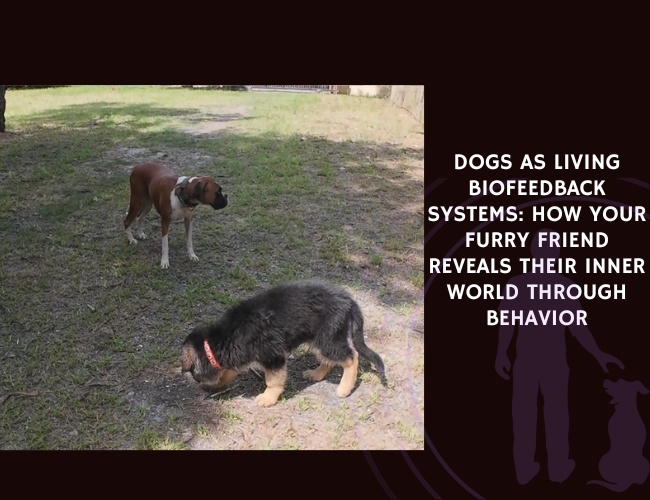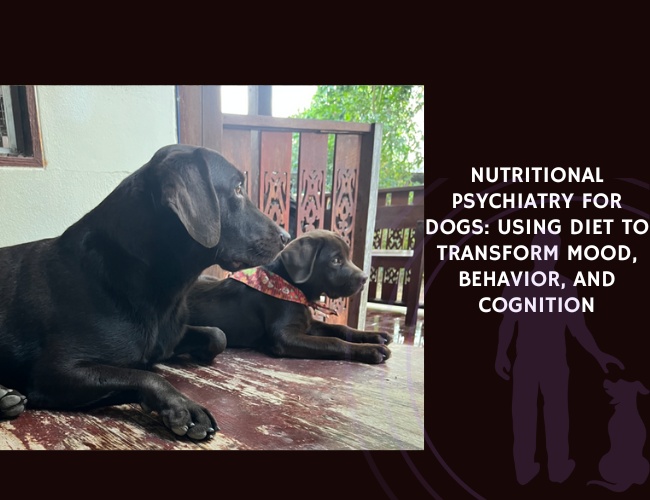Introduction
Every tail wag, every bark, and every anxious pacing pattern tells a story far deeper than what meets the eye. When your furry friend exhibits what we might label as “problematic behavior,” they’re not being defiant or difficult—they’re communicating through the only language they know. This comprehensive guide will transform how you understand your dog’s actions, shifting your perspective from seeing isolated behavioral issues to recognizing a sophisticated feedback system that reflects the complex interplay between your dog, you, and the environment you share.
For too long, dog training has focused on outputs—sit, stay, heel—without truly understanding the inputs that drive these behaviors. But what if we told you that your dog’s behavior is actually a mirror, reflecting not just their internal state but the entire ecosystem of your relationship? By learning to read this feedback system, you’ll unlock a deeper, more meaningful connection with your canine companion while addressing behavioral challenges at their root, not just their surface. 🧡
Understanding Behavior as Communication
The Language Your Dog Speaks
When we observe our dogs, we often fall into the trap of categorizing their actions as either “good” or “bad.” This binary thinking, while natural, severely limits our understanding of what’s really happening. Your dog’s behavior is actually a sophisticated communication system—one that evolved over thousands of years of domestication to help them navigate complex social and environmental challenges.
Think of it this way: when your computer runs slowly, you don’t punish it. Instead, you investigate what’s causing the problem—perhaps too many programs running, insufficient memory, or a virus. Similarly, when your dog exhibits unwanted behavior, they’re signaling that something in their system needs attention. This might be:
- Environmental stress manifesting as destructive behavior
- Unmet physical needs showing up as hyperactivity
- Emotional dysregulation appearing as aggression or withdrawal
- Communication attempts expressed through barking or whining
Beyond Good and Bad: The Feedback Model
Traditional training often focuses on eliminating “bad” behaviors through correction or punishment. But this approach is like turning off a smoke alarm without addressing the fire—it silences the warning without solving the problem. Instead, let’s explore how behavior functions as feedback within a complex system.
Every behavior serves a function. In behavioral science, we recognize four primary functions:
- Attention-seeking – The dog needs social interaction or reassurance
- Escape/avoidance – The dog is trying to remove themselves from an uncomfortable situation
- Access to tangibles – The dog wants something specific (food, toy, outdoor access)
- Automatic reinforcement – The behavior itself feels good or relieves discomfort
Understanding these functions transforms how we respond. Instead of asking “How do I stop this behavior?” we begin asking “What is my dog trying to tell me?” 🐾
The System Components
Your Emotional State: The Invisible Leash
Did you know that dogs can detect changes in human cortisol levels through scent alone? This remarkable ability means your emotional state directly influences your dog’s behavior in ways you might never have imagined. When you’re stressed, anxious, or upset, your dog doesn’t just notice—they absorb and reflect these emotions back to you.
This phenomenon, known as emotional contagion or limbic resonance, creates a feedback loop between you and your dog. Your anxiety might manifest as:
- Increased vigilance in your dog
- Heightened reactivity to environmental stimuli
- Changes in sleep patterns or appetite
- Defensive behaviors that seem “out of nowhere”
The beautiful truth is that this connection works both ways. Just as your stress affects your dog, your calm presence can help regulate their nervous system. This is why the most effective behavioral interventions often begin with the human, not the dog.
Environmental Factors: The Stage for Behavior
Your dog’s environment extends far beyond the physical space of your home. It encompasses everything from daily routines to sensory experiences, social interactions to seasonal changes. Each element contributes to the overall system that shapes behavior.
Sensory considerations play a crucial role. Dogs experience the world through:
- Scent (10,000 to 100,000 times more sensitive than humans)
- Sound (hearing frequencies up to 65,000 Hz compared to our 20,000 Hz)
- Visual motion detection (particularly peripheral movement)
- Tactile sensitivity (especially around face, paws, and tail base)
When we understand this heightened sensory awareness, behaviors that seem irrational suddenly make sense. That “random” barking might be a response to ultrasonic frequencies from electronics. The “stubborn” refusal to walk past a certain house could stem from overwhelming scent markers invisible to us.
Training History: Building Blocks of Understanding
Every interaction you’ve had with your dog contributes to their behavioral repertoire. This training history—whether intentional or accidental—creates patterns of expectation and response that influence future behavior. Consider how different reinforcement histories shape behavior:
Consistent positive reinforcement creates dogs who:
- Actively seek to engage with training
- Show resilience when faced with challenges
- Demonstrate confidence in new situations
- Maintain strong human-animal bonds
Inconsistent or punishment-based methods often result in:
- Anxiety around training contexts
- Suppressed warning signals (creating “unpredictable” aggression)
- Learned helplessness in challenging situations
- Weakened trust in human guidance
Physical and Biological Needs
At the foundation of all behavior lies biology. A dog’s physical state profoundly influences their behavioral output, yet this connection is often overlooked in traditional training approaches. Key biological factors include:
Exercise requirements vary dramatically by breed, age, and individual constitution. A Border Collie’s need for mental and physical stimulation differs vastly from a Basset Hound’s. Unmet exercise needs don’t just result in “excess energy”—they create systemic stress that affects every aspect of behavior.
Nutritional balance impacts behavior through:
- Blood sugar regulation (affecting mood stability)
- Gut-brain axis communication (influencing anxiety and reactivity)
- Inflammatory responses (contributing to pain-related behaviors)
- Neurotransmitter production (shaping emotional regulation)
Sleep quality deserves special attention. Dogs need 12-14 hours of sleep daily, with puppies and seniors requiring even more. Disrupted sleep patterns can lead to:
- Increased irritability and reactivity
- Decreased impulse control
- Heightened stress responses
- Difficulty with learning and memory consolidation

Decoding Behavioral Signals
Reading Body Language Systems
Understanding canine body language requires looking at the whole dog, not just individual parts. A wagging tail doesn’t always mean happiness—the height, speed, and direction of the wag all convey different messages. Let’s explore how to read these integrated signals:
Stress indicators often appear in clusters:
- Lip licking (when not food-related)
- Yawning (when not tired)
- Shaking off (when not wet)
- Whale eye (showing white of eyes)
- Panting (when not hot or after exercise)
These calming signals, first identified by Norwegian dog trainer Turid Rugaas, represent your dog’s attempts to self-soothe and communicate discomfort. Recognizing them early allows for proactive intervention before stress escalates to more problematic behaviors.
Functional Behavioral Assessment in Practice
Implementing a Functional Behavioral Assessment (FBA) at home doesn’t require professional training—just careful observation and documentation. Here’s how to conduct your own assessment:
Step 1: Define the behavior specifically Instead of “aggressive,” describe exactly what happens: “Growls and shows teeth when approached while eating.”
Step 2: Track the ABCs
- Antecedent: What happens immediately before the behavior?
- Behavior: What exactly does the dog do?
- Consequence: What happens immediately after?
Step 3: Identify patterns After collecting data for at least a week, look for patterns:
- Time of day
- Specific triggers
- Environmental conditions
- Your emotional state
- Recent changes in routine
Step 4: Form hypotheses Based on your observations, develop theories about the behavior’s function. Is your dog seeking distance from something scary? Trying to access something valuable? Communicating a need?
Advanced Monitoring Techniques
Modern technology offers unprecedented insights into our dogs’ internal states. While not necessary for every pet owner, these tools can provide valuable data for addressing complex behavioral challenges:
Heart Rate Variability (HRV) monitoring reveals stress levels invisible to the naked eye. Devices like the PetPace collar or FitBark can track:
- Baseline stress levels throughout the day
- Responses to specific triggers
- Recovery time after stressful events
- Sleep quality metrics
Video analysis transforms our understanding of subtle behaviors. Using slow-motion playback, you might discover:
- Micro-expressions preceding aggressive displays
- Subtle stress signals missed in real-time
- Patterns in social interactions
- Environmental triggers previously unnoticed
Common Misinterpretations
When “Disobedience” Isn’t Defiance
One of the most damaging misconceptions in dog training is interpreting failure to comply as willful disobedience. In reality, when dogs don’t follow known commands, they’re usually communicating something important:
Competing motivations often override training. A dog who “knows” recall but doesn’t come when called might be:
- Experiencing fear that overrides their desire to comply
- Engaged with stimuli more rewarding than returning
- Unable to process the command due to stress or arousal
- Physically unable to comply due to pain or discomfort
Context-dependent learning means dogs don’t generalize as easily as humans. A dog who sits perfectly in your kitchen might genuinely not understand the command in the park. This isn’t stubbornness—it’s how canine learning works.
The Myth of Dominance
Despite its persistence in popular culture, the dominance theory of dog behavior has been thoroughly debunked by modern science. Behaviors once attributed to “dominance” actually stem from:
- Resource insecurity (not letting you near their food)
- Fear or anxiety (growling when approached)
- Pain or discomfort (snapping when touched)
- Lack of proper socialization (inappropriate play behaviors)
Understanding this shifts our response from confrontation to compassion, from dominance to cooperation.
Separating Symptoms from Causes
Surface behaviors rarely tell the whole story. Consider these common scenarios:
Excessive barking might indicate:
- Cognitive dysfunction in senior dogs
- Thyroid imbalances affecting anxiety levels
- Undiagnosed pain conditions
- Sensory changes (hearing loss leading to startle responses)
Sudden aggression often stems from:
- Medical issues (brain tumors, hormonal changes)
- Chronic pain conditions
- Progressive sensory loss
- Neurological changes
This is why any significant behavior change warrants veterinary examination before behavioral intervention.
Reflective. Systemic. Honest.
Your dog isn’t misbehaving — they’re responding.
Each action is feedback, not failure. Scratch the surface of any “problem” and you’ll find a system imbalance begging to be understood, not corrected.
Behavior is not the output — it’s the signal.
Training without listening is noise. Real change begins when we stop suppressing symptoms and start decoding the emotional, environmental, and relational loops beneath them.



Your nervous system leads theirs.
Before the leash tightens, your breath already told the story. Regulate yourself, and your dog follows. That’s not dominance—it’s resonance. It’s feedback, in motion.
System-Based Solutions
Environmental Modifications
Creating an environment that supports desired behaviors proves far more effective than constantly correcting unwanted ones. Consider these system-level changes:
Spatial management reduces conflict and stress:
- Baby gates creating visual barriers between triggers
- Designated quiet zones for decompression
- Elevated resting areas for dogs needing security
- Clear pathways preventing resource guarding situations
Sensory optimization addresses overwhelming stimuli:
- White noise machines masking triggering sounds
- Window films reducing visual triggers
- Calming pheromone diffusers (Adaptil)
- Appropriate lighting for senior dogs with vision changes
Enrichment systems prevent boredom-related behaviors:
- Puzzle feeders extending meal times
- Rotation schedules for toys maintaining novelty
- Scent games utilizing natural abilities
- Safe destruction outlets (cardboard boxes, paper)
Relationship-Centered Approaches
The most profound behavioral changes occur when we shift from training methods focused on control to approaches centered on relationship and communication. This involves:
Building trust accounts: Every positive interaction deposits trust, while harsh corrections make withdrawals. Focus on:
- Predictable routines reducing anxiety
- Clear communication preventing confusion
- Respect for boundaries building confidence
- Celebration of small successes maintaining motivation
Co-regulation practices help both you and your dog:
- Synchronized breathing exercises
- Parallel walking meditation
- Gentle massage promoting parasympathetic activation
- Quiet companionship without demands
Proactive Management Strategies
Preventing problems proves easier than fixing them. Effective management involves:
Antecedent arrangement – Modifying the environment to prevent triggers:
- Feeding in separate rooms preventing resource competition
- Walking during off-peak hours avoiding reactive triggers
- Using visual barriers reducing territorial responses
- Creating predictable patterns minimizing anxiety
Skill building before problems arise:
- Teaching relaxation protocols during calm periods
- Building impulse control through games
- Strengthening recall in low-distraction environments
- Practicing handling exercises preventing future sensitivities
Technology and Tools
Tracking and Analysis Apps
Modern applications transform smartphones into powerful behavioral tracking tools:
Pet Diary apps offer:
- Customizable behavior tracking
- Pattern recognition algorithms
- Medication and appointment reminders
- Data export for veterinary consultations
Training platforms like Puppr or Dogo provide:
- Step-by-step training protocols
- Progress tracking features
- Video demonstrations
- Community support systems
Biometric Monitoring Devices
Wearable technology provides objective data about your dog’s internal state:
Activity monitors reveal:
- Daily exercise patterns
- Sleep quality metrics
- Calorie expenditure
- Unusual activity changes indicating illness
Advanced health monitors track:
- Heart rate variability
- Temperature fluctuations
- Respiratory patterns
- Overall wellness scores
This data proves invaluable when working with veterinary behaviorists, providing objective measurements alongside subjective observations.
Communication Enhancement Tools
Innovative technologies bridge the communication gap between species:
Button communication systems (like FluentPet) allow dogs to:
- Express specific needs (“outside,” “play,” “water”)
- Communicate emotions (“love you,” “mad”)
- Indicate problems (“ouch,” “help”)
- Engage in simple conversations
While not suitable for every dog, these tools offer fascinating insights into canine cognition and can reduce frustration-based behaviors.
Building Your Assessment Toolkit
Essential Observation Skills
Developing keen observation skills transforms your ability to understand and respond to your dog’s needs. Key areas to monitor include:
Baseline establishment: Spend a week documenting your dog’s normal:
- Energy levels throughout the day
- Interaction patterns with family members
- Response to routine events
- Body language in various contexts
Change detection: Notice subtle shifts indicating system changes:
- Altered sleep positions
- Changes in play behavior
- Variations in appetite or water consumption
- Modified social interactions
Context consideration: Always evaluate behavior within its full context:
- Time of day and recent activities
- Environmental conditions
- Social dynamics present
- Your own emotional state
Documentation Methods
Effective documentation captures patterns invisible in moment-to-moment interactions:
Written logs should include:
- Date, time, and duration
- Specific behaviors observed
- Antecedents and consequences
- Environmental conditions
- Your emotional state
Visual documentation:
- Short video clips of concerning behaviors
- Time-lapse recordings revealing patterns
- Before/after comparisons
- Environmental setup photos
Rating scales provide quantifiable tracking:
- Stress levels (1-10)
- Reactivity intensity
- Recovery time
- Training progress markers
Professional Collaboration
Knowing when to seek professional help ensures optimal outcomes:
Veterinary involvement essential for:
- Sudden behavior changes
- Aggressive displays without clear triggers
- Self-injurious behaviors
- Significant changes in normal patterns
Certified behaviorist consultation valuable for:
- Complex multi-faceted issues
- Behaviors risking human or animal safety
- Cases not responding to initial interventions
- Medication consideration requiring expertise
Collaborative team approach might include:
- Veterinary behaviorist for medical-behavioral interface
- Certified trainer for implementation support
- Veterinary nutritionist for diet-behavior connections
- Rehabilitation specialist for pain-related behaviors
The Path Forward
Shifting Perspectives
Embracing a systems-based approach to dog behavior requires fundamental shifts in how we think about training and behavior modification. Instead of asking “How do I stop this behavior?” we learn to ask:
- What is this behavior communicating?
- What system components might be contributing?
- How can I address root causes rather than symptoms?
- What environmental changes might help?
- How is my own state affecting the situation?
This perspective shift transforms frustration into curiosity, conflict into collaboration, and problems into opportunities for deeper understanding.
Creating Sustainable Change
Lasting behavioral change occurs not through quick fixes but through consistent system optimization:
Small steps, big impact: Focus on:
- One environmental change at a time
- Gradual progression in training
- Consistent daily routines
- Regular system assessments
Patience with the process: Remember:
- Behavior change follows non-linear patterns
- Regression often precedes breakthrough
- Consistency matters more than perfection
- Every dog progresses at their own pace
Your Next Steps
Ready to implement a systems-based approach with your dog? Start here:
- Spend one week observing without intervening – Simply notice patterns
- Choose one behavior to analyze thoroughly – Apply the FBA process
- Identify one system component to modify – Start with environment or routine
- Track changes for at least two weeks – Document shifts in behavior
- Celebrate small improvements – Acknowledge progress, however minor
Remember, you’re not just training a dog—you’re nurturing a relationship, optimizing a system, and learning a new language of interspecies communication. Every moment of frustration transforms into an opportunity for deeper understanding when viewed through this lens.
Conclusion: Is This Approach Right for You?
If you’ve ever felt frustrated by traditional training methods that seem to address symptoms without solving problems, if you’ve sensed that your dog is trying to tell you something but couldn’t decode the message, or if you simply want to deepen your relationship with your canine companion—then yes, this systems-based approach is for you.
This isn’t about having a “perfectly behaved” dog. It’s about creating a communication system that honors both species’ needs, building trust that transcends commands, and solving problems at their source rather than suppressing their expression. Your dog is already communicating with you through their behavior. The question is: are you ready to truly listen?
As you embark on this journey of understanding behavior as feedback, remember that every challenge presents an opportunity for growth—not just for your dog, but for you as well. Together, you and your furry friend can create a harmonious system built on mutual understanding, respect, and love. The feedback is there, waiting to be decoded. Let us guide you in learning this remarkable language of connection. 🧡🐾

